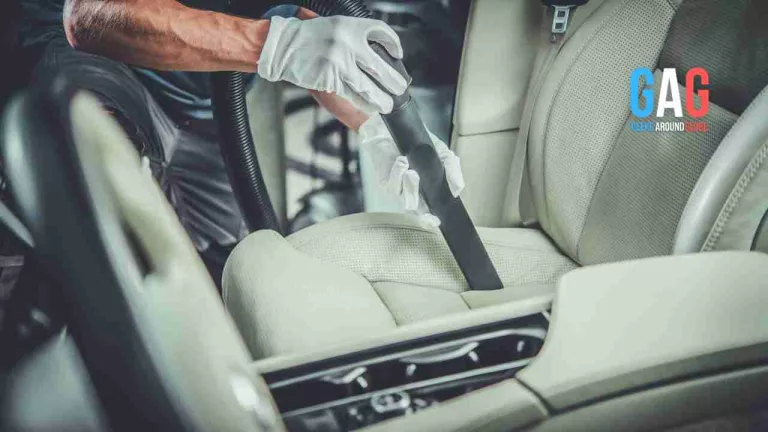Are you in the market for a new car?
Deciding to buy a new car, especially when it is your first car, can be a daunting process, especially without a car-buying checklist.
There’s no denying it: Buying a new car is also an overwhelming experience from negotiating with a salesperson, choosing a model, and figuring out financing, most people don’t even know where to start.
And before you begin, you must take the time to prepare. Thinking about buying a new car but have no idea where to start? Our only car-buying checklist has got you covered.
Keep reading to learn several tips for completing the new car-buying list before you head to the dealership.
Listing What You Need in a Vehicle
Before you begin searching for your first car, sit down and list everything you need and want in a vehicle. It will help save you time and money in the long run. Below is a comprehensive checklist to get you started:
- must have at least X number of seats
- must have X amount of cargo space
- must get X miles per gallon
- must have X safety features
- must have X entertainment features
- must be able to accommodate X number of child seats
- must be under X price point
Once you have your checklist, you can start narrowing down your options and finding the perfect car for your needs.
Making a Budget
Making a budget is a critical step in vehicle ownership. Without a budget, you could easily overspend on your car purchase. This budget should include the maximum amount you are willing to spend on your car, monthly payments you can afford, and if you are willing to consider car loans.
With this in mind, you can start shopping for your perfect car within your price range. This checklist will help you stay on track and avoid any unnecessary spending.
Researching Dealership Ratings and Reviews
When ready to buy a new car, you want to be sure to get the best possible deal. It is vital to do your research. Checking dealership ratings and reviews can help you narrow your options and choose a reputable dealer.
Ratings and reviews can give you a good idea of what to expect from a dealership. If you see negative reviews, it might be best to steer clear. But even if a dealer has positive reviews, it is still critical to read them carefully.
Pay attention to what customers say about the sales process, financing options, and trade-in value.
Basic Car Features to Consider
There are a few basic features that you should always consider when buying a car. These include the make and model of the vehicle, its safety features, and gas mileage. Here are essential components to consider:
Engine Type
There are three main types: gasoline, diesel, and electric. Gasoline engines are the most common engine and run on unleaded fuel. Diesel engines are less common but becoming more popular due to their high efficiency and torque. Electric engines are the newest type of engine on the market and are becoming increasingly popular due to their low emissions and high efficiency.
Heat and Air Conditioning
You should always test the heat and air conditioning in the car before making a purchase. You can park the car in a shady spot and set the AC to max cold.
Sit in the car for at least five minutes to see how well the AC works. Check the heat by turning it on full blast and see how long it takes to get warm.
Safety Features and Ratings
The National Highway Traffic Safety Administration (NHTSA) is responsible for safety ratings in the United States. Always check the NHTSA website for safety ratings. The ratings range from 1-5 stars, with five stars being the highest.
You should also check for safety features when car shopping. Airbags, seatbelts, and antilock brakes are all vital safety features in a car. If you are unsure of which car to buy, always err on the side of safety. A vehicle with high safety ratings and plenty of safety features is the best choice for you and your family.
Preparing for the Negotiation Process
Before you even step foot in a dealership, you must prepare for the negotiation process. The best way to do this is to have a checklist of what you want and need in a car. This way, you can easily compare different vehicles and their features and see which is the best deal.
Consider the type of car, the make and model, the year, the mileage, the price, the financing options, the warranty, and the dealer’s reputation. It may seem like a lot, but it’s pretty easy to narrow your options once you start looking at cars.
The bottom line is that you must prepare before you start negotiating. If you know what you want and need, you’re more likely to get a good deal on a car you love. So, start your search with a checklist in hand, and be one step closer to driving off the lot in your new vehicle.
The Final Step: Taking Delivery of Your New Car
To make sure the process goes smoothly, below is a checklist of things you need to do:
- Schedule an appointment with the dealer to pick up your car
- Make sure you have your license and insurance information with you
- Inspect the vehicle before signing the paperwork
- Take the car for a test drive to ensure everything is working
- If you’re happy with the vehicle, sign the paperwork and pay for it
- Ensure you receive the keys, the manual, and all other relevant documents
Now you can drive off in your new car! Just remember to follow all the rules of the road and drive safely.
Follow this Car-Buying Checklist to Find the Perfect Car
If you’re in the market for a new car, use this car-buying checklist. It’ll help you narrow your options and find the perfect vehicle for your needs. Most importantly, it’ll save you time and money in the long run.
So what’s the holdup? Start your search today! Head to our blog now for more advice on finding the car that meets your needs.







